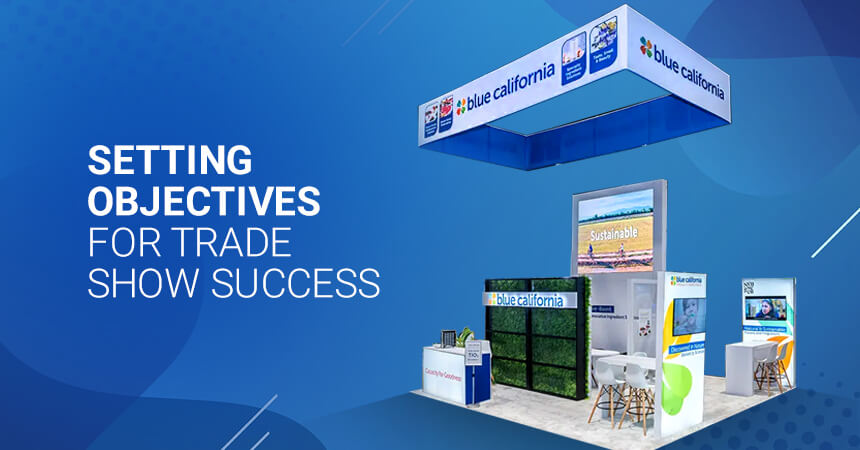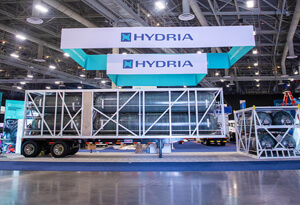
Participating in a Trade Show? Set Your Objectives First
The primary objective of any entrepreneur is to grow their business by reaching out to the maximum number of customers possible. While the process of expanding your business may be tedious, it is important for its overall growth.
One of the easiest ways in which both B2B and B2C companies can grow and promote their brand is by participating in trade shows.
Historical Context
Trade shows began as a tradition in medieval Europe with the sole purpose of creating a market for trade merchants. Traders and artisans would showcase and sell their products at these events.
As industrialization hit the globe, the practice started to spread. Today, these events serve as the best platform for companies to interact with investors, business partners and clients.
These days, companies decide to participate in trade shows for a number of reasons. Some attend when they want to launch a new product, others participate to gain more market visibility or simply to gather more leads. If you’re looking to attend a trade show in the near future, then it’s important that you set your objectives first.
Setting Objectives
Your trade show goals will dictate everything from your budget to your booth design and which event to attend, so it’s imperative that you learn how to set your objectives before you start preparing for the show.
Common Objectives
If you aren’t sure what your trade show objectives should be, here’s a look at some of the most common exhibit goals that brands set for themselves:
1. Launch a Product
 Trade shows are the ideal location to launch a new product to the masses. For a successful product launch at a trade show, let’s look at a few considerations that you should keep in mind for your trade show booth construction:
Trade shows are the ideal location to launch a new product to the masses. For a successful product launch at a trade show, let’s look at a few considerations that you should keep in mind for your trade show booth construction:
- Ensure your booth is visually appealing.
- Provide live demonstrations.
- Highlight product benefits over competitors.
- Offer free samples.
- Arrange for any special equipment needed
2. Generate New Leads
 For many companies, the entire point of exhibiting at a trade show is to capture the maximum number of leads. These leads can turn into lasting relationships that could end up benefiting your brand for years to come.
For many companies, the entire point of exhibiting at a trade show is to capture the maximum number of leads. These leads can turn into lasting relationships that could end up benefiting your brand for years to come.
Let’s take a look at a few things that should be considered if you’re heading to a trade show with the aim of generating leads.
- Attract attendees to your booth.
- Use captivating graphics.
- Incorporate technology in your trade show booth construction to engage visitors.
- Provide clear directions to your booth.
3. Build Brand Awareness
In crowded and cluttered markets it has become increasingly difficult for newcomers to establish their brand as a force to be reckoned with. Trade shows provide companies with the unique opportunity to get their company the kind of visibility it requires in an overcrowded market.
To help you achieve this goal, let’s take a look at a few important things to consider during the planning process:
- Maintain consistent brand representation.
- Create a memorable brand experience.
- Partner with a reliable trade show booth construction and design company
4. Enter a New Market
 Establishing your brand in a new market can be quite a task, but it isn’t impossible. If this is your goal, here’s what you need to think about while gearing up for the show:
Establishing your brand in a new market can be quite a task, but it isn’t impossible. If this is your goal, here’s what you need to think about while gearing up for the show:
- Differentiate from competitors.
- Clearly explain your offerings.
- Highlight reasons to choose your brand.
5. Retain Current Clients
 Many brands often forget how important it is to make their existing client base feel important and valued. At trade shows, companies can connect with their customers and let them know that they’re willing to do what is required to retain them.
Many brands often forget how important it is to make their existing client base feel important and valued. At trade shows, companies can connect with their customers and let them know that they’re willing to do what is required to retain them.
If this is what you’re hoping to achieve, then it’s also important to think about:
- Offer incentives to existing customers.
- Implement a loyalty program.
- Nurture relationships during the event.
6. To Meet Partners in Person

The future of your business depends largely on your ability to forge new relationships with business partners and then maintain them over time. At trade shows, you will have access to a plethora of companies who work in a similar space as you and could help you attain greater heights in the industry.
If this is your plan for an upcoming event, here’s what you need to keep in mind:
- Identify potential partners and invite them.
- Ensure decision-makers are available for deals.
- Provide a private negotiation space.
Measuring Success

These are just a few ideas of what the most common trade show objectives are. Depending on your marketing plan, you may want to attend the trade show with other goals in mind.
While you’re formulating your goals, it’s important to utilize the SMART principle. This states that all your goals should be:
S – Specific
Your goals should clearly define what you want to achieve by the end of the event. Ask yourself questions such as, “What exactly do I want to achieve?”, “What conditions and limitations might I face?”, and “How and when do I need to achieve this goal?”
M – Measurable
To determine whether your trade show appearance has been successful, you need measurable goals. Instead of setting vague targets like “increase client base,” set a specific goal such as “convert 5 potential leads into clients.” A measurable goal helps you quantify your success at the event.
A – Attainable
Setting unrealistic goals is a common issue for companies. If this is your first trade show, aim to break even or achieve a small profit margin. If it’s your fourth or fifth show, your goal could be to earn a 20% return on your investment. Expecting to double your investment in a single day at your first exhibit sets you up for failure. Ensure that your goals are realistic.
R – Relevant
Your goals should be relevant to your current market position. For a new company hoping to establish its name, setting a goal of completing 150 sales during the event is irrelevant. Instead, focus on lead generation goals that will help you gain the attention and visibility you need in the market.
T – Timely
Every goal you set should have a timeline. Timely goals help you answer questions such as, “When will I accomplish this goal?”, “What can I do exactly 4 months from today?”, and “What can I complete today?”
Creating Booths That Work
Design your booth based on your SMART goals. If launching a product, ensure space for demos. To sign deals, create a private meeting area. Your goals will guide you in creating a compelling and attention-grabbing booth. Focusing on trade show booth construction is vital.
A well-constructed booth can make a significant difference in attracting and retaining visitors. Ensure that your trade show booth construction aligns with your objectives and enhances the visitor experience.
After the Event
After the event, evaluate your achievements against your goals. Celebrate successes and learn from any shortcomings. Continuously set new goals and refine your strategies for future trade shows.
Assessing your trade show booth construction post-event can also provide insights into what worked well and what can be improved for future events.
Conclusion
Participating in trade shows can significantly boost your business growth and visibility. By setting clear objectives and focusing on trade show booth construction, you can create a memorable and effective presence at these events. Remember, your trade show goals will be the guiding light that will help you create a spectacular booth that earns the attention of all the attendees. Great goals won’t accomplish themselves. You will need to come up with a stellar plan to execute your booth to perfection.
Once the show is over, take stock of everything that happened and see if you were able to accomplish all the goals and targets that you set for yourself. If you did, great job! At the next event, try to raise the bar and do something new. If you didn’t, don’t worry. Look back on where you might have made a mistake and see if you can rectify it at your next trade show. Always try and set yourself new goals for every event and use different strategies to achieve them. This will enable you to gain a deeper understanding of what works best for you and your brand on the trade show circuit.
By keeping your objectives clear and focusing on effective trade show booth construction, you can maximize your impact and achieve lasting success at trade shows.
Related Posts
